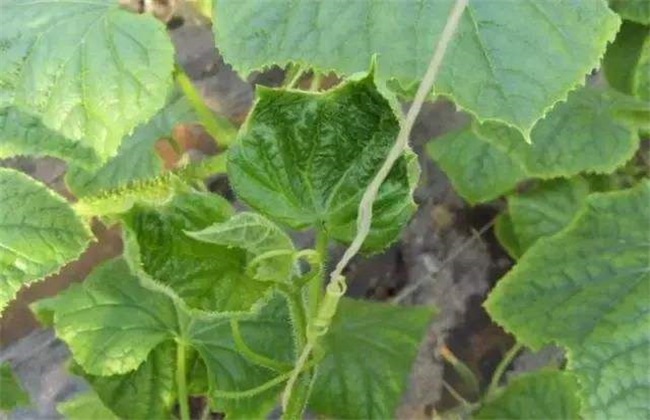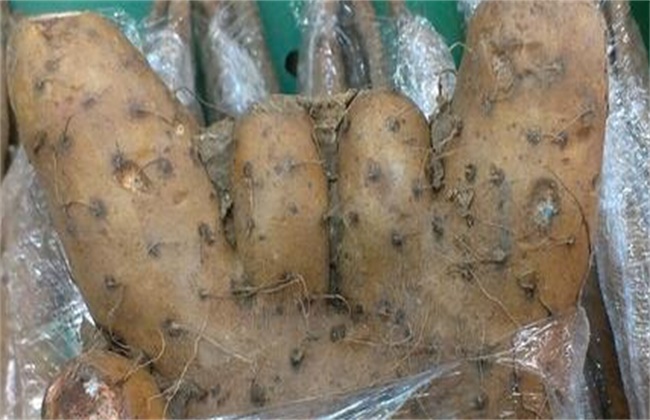Causes and solutions of rotten seeds and dead seedlings of Chinese yam
In the process of yam planting, there is often the phenomenon of rotten seeds and dead seedlings of yam, which is due to the lack of experience of growers or non-standard planting technology, when this situation occurs, the output of yam will decrease year by year. So what is the reason why the dead seedlings of Chinese cabbage are rotten? Come and have a look with the editor.

1. The quality of seed block is poor.
The quality of the seed block of Chinese yam is the key to the high or low yield of the strong seedling of the absolute yam. Using the injured or undried seed block as seed can easily lead to slow emergence, weak seedling and, in serious cases, rotten seed and dead seedling. When sowing with fresh wounds, the rate of dead seedlings of rotten seeds is more than 50%, so directly sowing yam plants with wounds or without adequate drying is an important cause of rotten seeds and dead seedlings of yam.
Solution: determine the number of seeds left according to the planting area of Chinese yam, leave as few wounds as possible when harvesting seed blocks, dip the wound in lime powder or carbendazim powder and fully air before planting, keep it properly and strictly prevent frost injury. Drying seeds can not only accelerate wound healing, but also prevent bacteria from invading, promote seed block activity, and make adventitious buds germinate and grow into robust buds.
2. Low temperature and high humidity
During the sowing and emergence of Chinese yam, the rainfall is more, the soil humidity is higher, and the low temperature and low light for a long time are the important reasons for the rotten seeds and dead seedlings of yam. In addition, the lower the temperature and the larger the rainfall, the more serious the dead seedlings of Chinese yam.
Solution: when there is no continuous overcast and rainy weather 7-10 days before Chinese yam sowing, this is the best sowing time for Chinese yam, and furrow and ridge should be opened 10 days before sowing, which can increase the ground temperature and reduce the causes of rotten seeds and dead seedlings.
3. Sowing too deep
In the investigation, it is found that in the field of rotten seeds and dead seedlings, about 65% of the fields are buried too deep, indicating that in the bad climate of rainy, high humidity, low temperature and low light, sowing too deep is also one of the reasons for the death of seedlings in a large area.
Solution: proved by practice. The suitable sowing depth of Chinese yam is 8-10 cm. If the sowing is too shallow, it is not conducive to sprouting in case of dry weather and soil moisture sowing, but it is easy to rot and plant dead seedlings in low temperature and low light or continuous overcast and rainy weather.
4. Variety difference
The degree of dead seedlings of different varieties of Chinese yam is different. in the main cultivated varieties, the dead seedlings of vegetable yam is obviously more serious than that of rice yam, so when selecting varieties and cultivation, we must choose varieties that are not easy to rot and dead seedlings according to local conditions.
The above is the introduction of the causes and solutions of rotten Chinese yam. I hope it can help you. If you want to know more about it, please follow us.
Related
- Where is it suitable to grow horseradish in China? it is expected to see the middle altitude horseradish in Alishan.
- How to prevent tomato virus disease reasonably? (Control methods included)
- Many people like to plant towel gourd on the balcony. What are the main points of this method and management?
- What crops can chili peppers be mixed with?
- Fertilization techniques and matters needing attention in Tomato
- What are the grafting techniques for peach seedlings in spring?
- Harm and control methods of root swelling disease of Chinese cabbage
- What are the pests of sweet potatoes? How to prevent and cure it?
- Symptoms, causes and Control methods of navel Rot in Tomato
- The cause of "Cucumber rotten bibcock" in Farmers' planting Cucumber and its Control Plan



